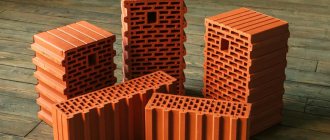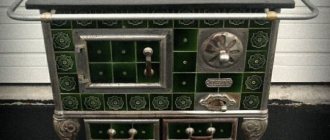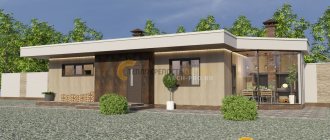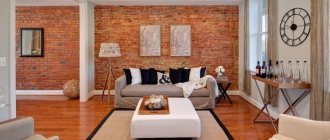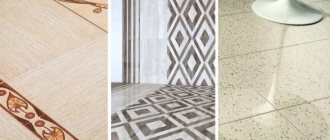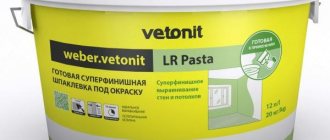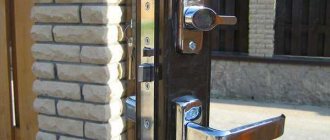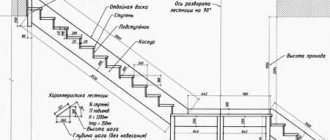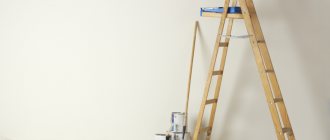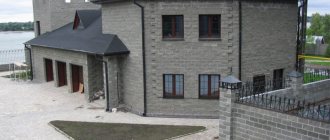Material rating
20 out of 5 Price
16 out of 5
Practicality
20 out of 5
Environmental friendliness
20 out of 5
Ease of manufacture
20 out of 5
Labor intensity when using
final grade
4.8
4.8 out of 5
Twin blocks are a type of cellular concrete. They have a number of advantages over other building materials, and therefore easily withstand competition in the market and are widely used in various construction works.
Prices for aerated block houses
Box at home
| Box at home | 14,000 rubles per 1 m² of general building area |
The general construction area is equal to the building area multiplied by the number of floors.
Foundation: bored piles Ф-300 mm, reinforced concrete monolithic grillage 500*400, backfill, bitumen coating waterproofing.
Bored piles F-300mm and a reinforced concrete monolithic grillage 500x400mm were chosen as the foundation for the house. Such foundations have proven themselves to be effective in the construction of aerated concrete cottages on any type of soil, including problematic water-saturated soils. The piles are interconnected by a grillage reinforcement frame, which runs under the load-bearing walls. The structure is quickly erected, highly resistant to adverse conditions and durable.
Walls: External - Twin block 300 mm.
For the construction of external walls of cottages, it is recommended to take a gas block in the form of a twin block of 300 mm. Twin block is a masonry material with precise geometric proportions, which is a variant of aerated block, but in terms of technical characteristics it is close to wood and has high energy efficiency.
The low weight of aerated blocks allows for significant reduction of pressure on the foundation during construction. The gas block does not burn, is not damaged by rodents and insects and is not subject to rotting. When laying, complete abandonment of the mortar and the use of a special adhesive composition are allowed.
Floors: 1st floor at the 0:000 mark and at the 3.0 m mark wooden 200 mm thick, insulation is made with 200 mm Ecowool
Deficiencies in the insulation of the floors of a house made of aerated blocks lead to heat leakage, causing increased costs for heating the building and its maintenance. To prevent the occurrence of such problems, it is recommended to insulate with 200 mm ecowool during construction. This will save an additional 20% of heat.
This material is completely natural. Thanks to the treatment with fire retardants and other substances, it is classified as non-flammable. In addition, its composition does not absorb moisture and therefore can be installed without a vapor barrier film.
Staircase: wooden temporary.
Roof: double pitched, 200 mm insulation, metal tiles, roofing fittings included in the construction estimate, wooden eaves lining painted in the color of the customer’s choice.
The key to coziness and comfort at home is the correct construction and insulation of the roof structure. A gable roof with metal tiles and 200 mm insulation has proven itself positively.
This design has been used in construction for many decades of construction, providing cottages made of aerated blocks with effective year-round ventilation and high-quality thermal and waterproofing of the under-roof space. This method of roof construction simplifies its installation scheme, and also increases its reliability and durability.
Construction period is 90 days.
Box house with windows and doors
House with rough finishing
| House box + Rough finish | RUB 20,000 per 1 m² of general building area |
The general construction area is equal to the building area multiplied by the number of floors.
Warm contour: Windows: 5-chamber VEKA SoftLine profile, 5-chamber double-glazed window.
For a cottage made of aerated blocks, VEKA SoftLine windows, which have a five-chamber profile, are best suited. The design allows you to significantly reduce heat loss and at the same time protects from street noise.
These windows fully comply with the requirements of quality category “A”: the large installation depth makes it possible to install a double-glazed window with the best characteristics, scratches and abrasions are almost invisible on their surface, and an additional sealing contour increases the tightness and ventilation control of a gas block house.
Doors: steel, insulated safe doors to the house.
Engineering communications: Plumbing, sewerage, 1st floor radiators, 2nd floor radiators, boiler room wiring, sewerage throughout the house to consumers, water consumption points throughout the house, ASO-1 septic tank with biofilter and infiltration field.
It is not always possible to connect an individual home to a centralized wastewater treatment system. Therefore, owners need to foresee the possibility of constructing their own utilities. The recommended septic tank ASO-1 with a biofilter and infiltration field is completely autonomous.
It is designed to serve a cottage in which 4-5 people permanently live. The design, consisting of two sections for wastewater treatment and a drainage field, is a completely ready-to-use biological system. Water purified from household sediments comes from it for soil purification.
Electrical: grooved installation, Schneider automatics, differential at water consumption points. automatic machines, power lines - GOST VVG-NG cable (non-flammable) 3*2.5, lighting lines - GOST VVG-NG cable (non-flammable) 3*1.5.
According to SNiP, strict restrictions are imposed on electrical equipment installed in residential buildings. To ensure the safety of people living in an aerated block cottage, it is necessary to use flame retardant materials with low smoke and gas emissions. Therefore, the company recommends using GOST VVG-NG (non-flammable) 3x2.5mm cable for power lines, and GOST VVG-NG (non-flammable) 3x1.5mm cable for lighting lines, as well as installing Schneider automatic machines.
Construction period 60 days.
House with fine finishing
| House box + Rough finishing + Finish finishing | RUR 25,000 per 1 m² of general building area |
The general construction area is equal to the building area multiplied by the number of floors.
Facade: facade insulation of basalt type 50 mm, preparation of the base with an adhesive composition in 2 layers with reinforcement with fiberglass mesh.
Despite the high energy efficiency of aerated block, buildings constructed from it still require additional external thermal protection. In this case, it is better to choose materials that allow you to save not only on heating, but also on the cladding of the cottage itself.
The recommended finishing with façade insulation of 50 mm basalt type with preparation of the base using an adhesive composition in 2 layers and reinforcement with fiberglass mesh has already been tested many times and has shown high performance in the changeable Russian climate.
Interior finishing: Plaster of internal walls, plaster, putty, slopes
Staircase: metal frame with primer.
Blind area: concrete blind area 1000mm wide around the perimeter of the house
Turnkey ventilation.
Construction period 60 days.
Composition of the finished project:
1. Scheme of linking the house to your site 2. Working draft for builders (Architectural and construction part). Mirror option at no extra cost! We make changes to the project. The cost, taking into account changes, is calculated individually. Free delivery throughout Russia
House types:
House project for a narrow plot C118. Flat ceiling on the second floor
Our offers
House on credit
More details
Apartment for house
More details
Maternal capital
More details
Floor installation
Overlapping should be done in cases where the house is being built with several floors and before installing the roof. There are several ways to make a ceiling: from wooden beams, a metal frame, or from ready-made concrete slabs that are installed on an armored belt. It is clear that such slabs cannot be lifted manually, so you cannot do it without the help of a crane. If you make a ceiling from beams, their ends need to be cut at an angle of 60–80?, treated with an antiseptic, wrapped in roofing material and installed in niches to a depth of 150 mm. Install the beams in increments of 1–1.5 m. After that, the sheathing is knocked down from the boards and the flooring is laid.
Overlap on beams
Overlappings can be divided into the following types:
- basement floor separating the basement and first floor;
- interfloor ceiling that separates the floors;
- attic floor separating the floor and the attic;
- attic floor separating the floor from the attic.
Types of floors
Twin block technical characteristics
The building material, which is twin block, is manufactured strictly in accordance with technological processes. Its main technical characteristics are:
High strength;
- a light weight;
- increased vapor permeability;
- flammability resistance;
- ease of transportation;
- increased noise and heat insulation properties;
- resistance to aggressive environments.
Vapor permeability depends on the density of concrete, which is divided into the following types:
- D-400;
- D-500;
- D-600;
With a strength of M50, lightweight porous concrete is only slightly inferior to brick, but at the same time the percentage of its freezing in the cold season is much lower.
Arrangement of windows, window sills and installation of lintels
Masonry reinforcement
The places where window openings will be made need to be additionally reinforced. To do this, cut 2 lines on the blocks under the future window frame and place the reinforcement there. The length of the grooves must be greater than the length of the frame, 300 mm on each side. The grooves with reinforcement need to be filled with glue and masonry continues. Then you can strengthen the space under the windows.
Window lintel device
When the window and doors are laid out to the top, it is necessary to make lintels so that the structure does not collapse. To do this, you can buy special U-shaped blocks or make the formwork yourself. Place a board above the window on which the blocks will rest. Place U-shaped blocks on it, lay reinforcement and fill everything with concrete. But you can do without them. Just lay blocks 150 mm thick on the outside edge of the same board (cut a regular block). Lay 100 mm thick blocks inside along the edge. Thus, you have made something like U-shaped blocks. Then everything is the same: install a frame made of reinforcement and fill the space with concrete.
Advantages of using twin blocks in the construction of low-rise buildings
The advantages are:
- Strength. The constructibility and density of concrete allows the building material to be used for the construction of load-bearing walls of one- and two-story buildings.
- Ease of processing. The twin block can be easily adjusted to the required dimensions using a handy tool.
- Thermal insulation. The materials used for the manufacture of twin blocks impart porosity and increase the performance properties of concrete.
- Frost resistance and fire safety. All components from which the blocks are made belong to the 1st degree of fire resistance. These same properties provide the necessary porosity with respect to freezing, which allows the use of building materials in the most difficult meteorological conditions.
- Ease of transportation. Due to their lightness, the blocks are convenient not only to deliver to construction sites, but also to move the blocks depending on the progress of construction work.
- Sound insulation and environmental friendliness. The production of blocks does not use chemicals or other substances harmful in their properties that can affect human health during operation. The special structure of the material has soundproofing properties and can significantly reduce the level of street noise.
- Light weight. This property is especially valuable in construction, as it makes it possible to lay blocks on all types of foundations.
The listed characteristics and features of the material make it possible to use it for the construction of load-bearing walls of various types of low-rise buildings. Lightness, which does not cause foundation subsidence, and strength allow buildings to be used for a long time without additional costs for repair work. It should be noted that the properties possessed by porous concrete make living in houses built from blocks comfortable.
Advantages of using the services of our company
The advantages of the company include:
- performing work in a complex, starting from engineering surveys, design, ending with turnkey delivery of the facility;
- mandatory coordination with the customer of all aspects of the construction of a house made of twin blocks;
- purchasing building materials only from trusted manufacturers with whom the company has been fruitfully cooperating for a long time, which has a positive effect on the final cost of construction;
- guaranteed quality with strict compliance with current SNiPs and construction technologies.
You can place an order for the construction of a turnkey house from twin blocks on the company’s website using the call back function.
Restrictions
Many servers have certain restrictions regarding the privacy of the territory. It could be:
- Prohibition of allocating territory from the very bottom of the world to the sky;
- Ban on highlighting the entire world;
- Restriction on the allocation of blocks (for example, the maximum number of cubes in the territory is 30,000);
- Limit on the number of people in one region;
- On some servers it is forbidden to call the region by your nickname;
- Restriction on ownership of regions (for example, one person can only own 3 regions);
- Prohibition on the seizure of someone else's acquired territory.
When privatizing a region, be careful, find out what restrictions there are on the server and carefully check the territory. Especially the starting points, it may turn out that something completely different from what is needed will be attached. Don't add untested people, they can ruin everything you've worked so hard on. Try to create reliable protection from griefers and you won’t have to worry about your property. Sources:
- https://upmine.ru/other/doma-v-minecraft.html
- https://fotodomov.com/samye-krasivye-doma-v-maincraft.html
- https://game-roblox.ru/minecraft/recepti/dom-m/
- https://it-doc.info/kak-postroit-krasivyj-dom-v-majnkrafte/
- https://mc-monitor.ru/blog/kak-postroit-dom-v-minecraft
- https://gamai.ru/index.php?newsid=128
- https://ga-top.ru/blog/kak-privatit-territoriyu-v-minecraft
Types of Flowcharts
While flowcharts can be used to explain anything, most people use them for one of three reasons: to communicate decisions, to represent processes, or to visualize data—which is why most flowchart templates fall into one of these three categories. So let's take a look at what each type of flowchart includes and when and why to use them.
Decision Tree
Think of a decision tree as an if-then flowchart. By allowing you to create a map of possible outcomes based on a given set of options, a decision tree can help you see your path clearly and evaluate your options.
Decision trees typically start with one node (a question), then branch into two options (decisions), then those options lead to additional nodes (possible outcomes). By their nature, decision trees are particularly well suited to determining probabilities and advantages, and can even be used to develop algorithms that help predict outcomes.
Technological flowcharts
By providing the ability to outline and analyze the sequence of activities in the production of a product or service, a process diagram can help you find gaps and duplications in your process, identify where specific resources, equipment or personnel are needed, identify potential bottlenecks or problem areas, and uncover potential savings.
As well as describing how a certain activity should function or specifying the features of a product or service, process flowcharts can also be used to train new employees, existing teams, or to help third-party vendors or consultants understand your business and their place in it.
Data Flow Diagrams
When you need to deeply analyze your data, a data flow diagram. By using symbols and short text labels to display inputs, outputs, storage locations, and travel paths, they can combine information into a graphical representation of what may be difficult to express in words. And because they can be used by technical teams and non-technical representatives, they are a great solution when you need to create a presentation for a wide audience.
Example: Data Flow Diagram
What kind of foundation is required?
The main part of the costs when building a house falls on the arrangement of the foundation. This structure is subject to a large load from load-bearing walls, so it must be as strong and reliable as possible. In the case of foam concrete, this impact is minimized because the material is lightweight.
For such houses, the following types of foundations are used:- On slabs.
- On the tape.
- On stilts.
- Combined - pile-grillage.
To choose the best option, you need to consider the following nuances:
- Soil density. On motionless soils, it is customary to install a strip or pile-grillage foundation. If the groundwater level is high or in swampy conditions, it is better to choose a slab or pile option.
- Soil freezing depth. If the foundation is placed above this point, under the influence of heaving, the foundation will begin to be squeezed out and deformed. This will lead to distortion of the building and damage to wall structures.
- Availability of a basement. If you plan to build basements, it is better to use a buried tape.
- Project implementation timeframe. Pile-grillage and pile foundations are laid as quickly as possible, but in some conditions they are prohibited.
Based on all the factors, you can find the optimal solution for each case.
How to privatize territory in minecraft?
- <> - required arguments
- [] - optional arguments
- u (UP) - up
- d (DOWN) - down
- n (NORD) - north
- s (SOUTH) - south
- w (WEST) - west
- e (EAST) - east
Private territory using the region selection tool. Convenient, but not the most effective way. Suitable for beginners:
- //wand
— get the private tool. (usually a wooden hatchet) - The left mouse button (LMB) on the block will set the first point of the selected area
- The right mouse button (RMB) on the block will set the second point of the selected area
- /rg claim
<region_name>
- claim the selected area - //sel
— delete the region grid
The disadvantage of this method is that, as a rule, you will have to dig several blocks down for one point and build a pillar for another. In addition, this is inconvenient if you need to make the private size the maximum allowed size. Private territory using commands:
- //pos1
— set the first point - //pos2
— set the second point - //shift
< /n> — shift the grid of the selected area < /n>
where < /n> is the number of blocks, and in square brackets the direction, without specifying their shift will be in the direction of view. (the arguments are also applicable to other commands for changing the parameters of the selected area)
- //expand
— increase the selected area - //contract
- narrow the selected area - /rg claim
<region_name>
- claim the selected area
Selecting a region strictly along the boundaries of a chunk (using the example of 9 chunks)
:
- //chunk
— select the entire chunk - //expand 16 16 w
— expand the region by 2 chunks in the western and eastern directions - //expand 16 16 n
— expand the region by 2 chunks in the north and south directions
Protecting the territory with private flags.
Now that you have successfully created a private territory, you should take care of protecting your region. To do this, you will need to set some flags in private. Example:
- /rg flag <name> pvp deny
- Ban PvP in the region (
allow
- allow)
| — allow | — deny example: /rg flag <name> pvp deny — will prohibit pvp in this region. | |
| passthrough | Use allowed to have this region treated as an area that does not check the build flag (use this to make simple no-PVP, etc. zones). |
| build | Attention! It is recommended that you leave this flag alone as turning it on will allow other players to break blocks in your region. |
| pvp | Allows/prohibits PvP. |
| mob-damage | Allows mobs to take away your health (they can throw you off a cliff or throw you into lava). |
| mob-spawning | Allows mob spawning. |
| creeper-explosion | Allows the explosion of a creeper (if disabled, the creeper will disappear instead of exploding, or will not cause damage to buildings). |
| enderman-grief | Allows the Ender to grief in your territory. |
| enderpearl | Allow or deny the use of Edge Pearls |
| ghast-fireball | Allows damage from ghast balls (as well as creeper). |
| sleep | Allowed to sleep on the bed. |
| tnt | Allow TNT explosion. |
| lighter | Allow or prohibit the use of flint. |
| fire-spread | Allow the fire to spread. |
| lava-fire | Allows ignition from lava. |
| lightning | Allow lightning to strike. |
| chest-access | Deny access to the chest. |
| water-flow | Allow water flow |
| lava-flow | Allow lava flows |
| use | Allow the use of buttons, doors, etc. |
| interact | Allow interaction with some objects |
| vehicle-place | Allow placement of vehicles. |
| vehicle-destroy | Permission to remove vehicles. |
| snow-fall | Allow snow to fall. |
| leaf-decay | Allow foliage to fall. |
| invincible | Temporary immortality (operator team priority). |
| entry | Entrance. |
| exit | Exit. |
| exit-group | Out for groups. |
| greeting | When entering a region, the player sees your wish “**Welcome, %name%” in the chat. blue color. |
| farewell | Message when leaving a region |
| notify-enter | Show a message when entering a region. |
| notify-leave | Show a message when leaving a region. |
| deny-spawn | Prevent individual mobs from spawning. |
| heal-delay | Healing speed (set frequency 1=1 sec.) |
| heal-amount | Health healing (set frequency 1=1 ()) |
| teleport | Allows you to set the location for the teleport /region teleport |
| spawn | Sets the spawn location: /region flag <region> |
| buyable | Not implemented |
| price | Sets the price per region (on servers with currency) |
| blocked-cmds | Block the specified commands. |
| allowed-cmds | Disable all commands except those specified (if you are making a trap, leave the /kill command) |
| feed-min-hunger | How long will the hunger bar in the region increase? |
| feed-max-hunger | How much will the hunger bar in the region increase (feeding). |
| ice-form | Permission to form ice in the region. |
| ice-melt | Ice Melt Permit |
| potion-splash | Permission for effects from explosive potions |
| pistons | Allow the pistons to move the blocks |
| item-drop | Allow players to throw things away |
| game-mode | Set game mode in region |
| send-chat | Allow writing to chat from the region |
| chorus-fruit-teleport | Disable teleportation via Horus(1.9+) |
➤
Adding (removing) other players to private.
Let’s answer one of the most common questions: “How to add a friend in private?”
- /rg addmember <name> <nickname>
- Add a player to the private participants - /rg removemember <name> <nickname>
- Remove a player from private members - /rg addowner <name> <nickname>
- Add a player to the private owner - /rg removeowner <name> <nickname>
- Remove a player from the private owner
